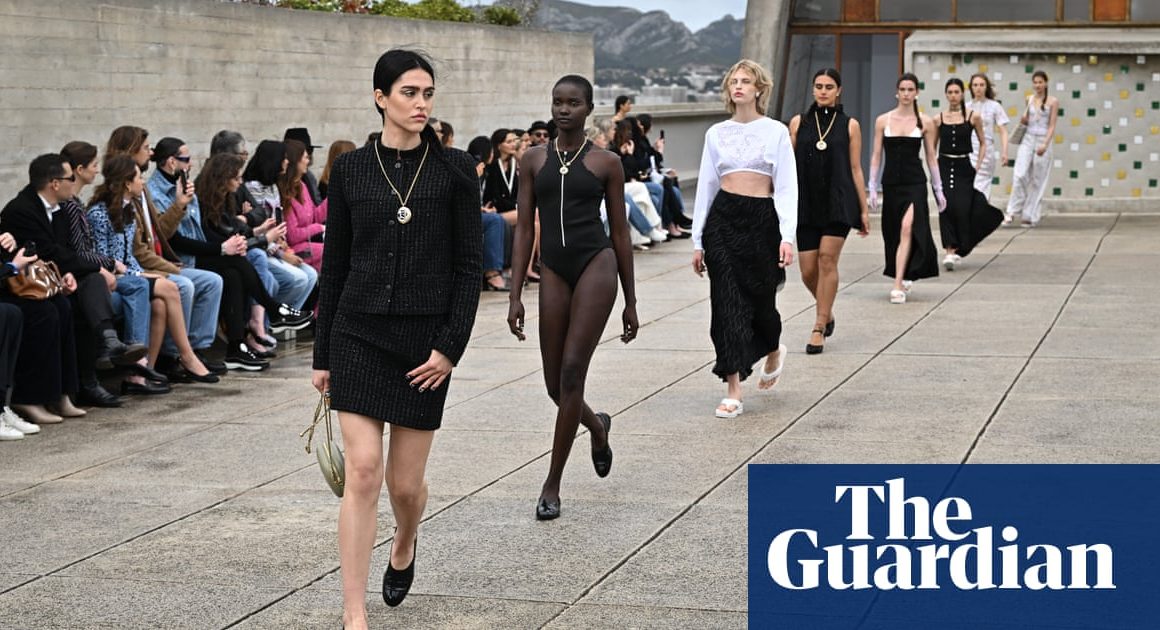“In a world governed by ideal economic conditions … there will be no sensible shoes,” 1920s shoe designer André Perugia once said. We’re all wearing comfy, sexless trainers now, so draw your own conclusions. Thankfully, history has plenty of silly footwear at hand to amuse us, while we wonder where all our money went.
Paleoanthropologists can tell when we started to wear shoes regularly by looking at feet: toe bones became spindlier about 40,000 years ago. Most of that footwear was too organic to survive. The oldest known example is a pair of sagebrush bark sandals that are probably about 10,000 years old and look like something many Guardian readers would wear; while Ötzi the iceman had a chic-er pair in 3300-ish BC, with a bearskin base, deerskin side panels, and a bark-string net to pull them closed. “The thick layer of hairs gives good insulation and a soft feeling to walk on,” a researcher who reconstructed them commented, which sounds like a four-star review to me.
If you’ve read other Shock of the olds, you won’t be surprised to hear that the Greeks, Romans and Egyptians were all over shoe tech. You can buy sandals that look like many-thousand-year-old Greek ones with a toe and ankle strap, and Tutankhamun’s tomb contained exquisitely decorative purple and gold “thebets”, a sort of flip-flop.
As Tut’s sandals show, shoes were about more than not treading on painful or potentially fatal stuff almost from the beginning. They were a way to convey status, look bigger and more powerful, or to attract a mate. Men’s shoes were as fancy as women’s, historically: “licentious spendthrift” Richard Sackville’s 1613 portrait features gigantic rosettes on his white heeled slip-ons (Jacobean playwright John Webster poked fun at using “overblown roses to hide your gouty ankles”). Short king Louis XIV (5 ft 4/162cm) displayed permanent eleganza in his towering red heels, which Charles II copied.
But when did shoes get sexy? The rich tapestry of human sexuality being what it is, they probably always were. . In 1769, Nicolas Restif de la Bretonne published a full-blown foot fetish novel, Le Pied de Franchette, after getting hot under the collar about a girl in pink high-heeled slippers. Knowing that, Jean-Honoré Fragonard’s painting The Swing – with its depiction of a woman losing her heeled pink slipper – becomes positively filthy. (Indeed the weirdly specific brief for it was: “I want you to paint my mistress on a swing being pushed by a bishop and to show me in a position where I can see her legs and more.”) Shoes were a feature of Victorian pornography, letting consumers know they were enjoying contemporary perving, rather than boring classical statuary, and the late 19th century brought explicitly fetishy shoes, impossible even to stand in. Scope for steel heel reinforcement meant stilettos followed in the 1950s and shoe fashions remained broadly unhinged until, mercifully, the pandemic got us all back into slippers (one of its only upsides).
OK, time to get this (Dr Scholl) Party (Feet) started. Bring on the shoes.
Roman sandals
Roman caligae had hobnailed soles, which made them super sturdy and allowed for personalisation. Hobnails could be arranged in patterns to represent astrological symbols or even, according to a disapproving comment from Clement of Alexandria, by women to convey “amorous embraces”. (Yes, they wore them with socks.)
Medieval poulaines
If we know anything grim about the middle ages, it’s the plague and that other terrible scourge – ridiculously pointy shoes. Poulaines (also known as crakows or pikes) weren’t particularly well received even in their own day: they were ridiculed and reviled, considered effeminate, sexually depraved and irreligious (as they stopped you kneeling to pray and priests were forbidden to wear them). Someone called “Robert the Horny” apparently launched a fashion for stuffing the toes, making them look even ruder. They gave wearers bunions, too.
Chopines, c1590
For Venetian grandees, a wife in a super-high chopine (the most extreme of these platform shoes reached 54cm) was a way of showing off how much fancy fabric you could afford to dress her in. This product of conspicuous consumption was highly impractical for getting around, and meant women needed chaperones: a good way of reinforcing patriarchal control over their movements. An alternative take on the chopine suggests they made women look like penises: “Chopines create a phallic image of the female form – transforming her into an erect column-like structure,” according to the Courtauld Institute.
Turkish qabqab, 18th century
Many early shoe designs were about filth, and avoidance thereof. Pattens – sturdy wooden or layered leather overshoes strapped on to dainty indoor shoes to avoid befouling them with the unspeakable slurry that lurked outside your door – were used until the 18th century. These Turkish qabqab are for hammam use: you certainly wouldn’t get a verruca that high up. By the late 18th century, the first patents for waterproof shoes were filed, and pattens fell from favour.
Manchu platform shoes, 18th century
It is still up for debate whether these high wooden platforms were supposed to be practical (for walking in wet and cold north-eastern China), a declaration of distinct identity from the Han footbinding, or designed to mimic the gait of women with bound “lotus” feet. Heel shapes included “flowerpot”, “moon” and “horse hoof”.
Tabis, 1920s
They’ve fought Crocs for the most polarising footwear crown since 1989, but tabis started off innocuously. Originally Japanese leather split-toed shoes made from a single animal hide, they evolved into the sometimes soled socks you could wear with thong sandals, before rubber manufacturer Bridgestone turned them into soled outdoor workshoes. Martin Margiela’s hommage became a fresh cause célèbre last year, with the heart-rending story of the New Yorker whose Tinder date stole her tabis (she got them back, but arguably he was doing her a favour?). Podiatrists are unconvinced: “I wouldn’t be surprised if that shoe type caused pain between the toes. Ingrown toenails wouldn’t be out of the question,” one told the Guardian in 2020.
Moonshiner’s cow shoe, 1924
“The cow shoe is a strip of metal to which is tacked a wooden block carved to resemble the hoof of a cow, which may be strapped to the human foot. A man shod with a pair of them would leave a trail resembling that of a cow,” according to a 1922 Florida newspaper report. And why would a man want to do that? Crime is why: prohibition moonshiners wore them to avoid alerting police to the location of illicit stills.
Unusual sandals, 1947
These pleasingly avant garde numbers look a bit like slap soles, a 17th-century invention to stop people sinking into mud. (Fun fact: men’s protective lower soles were left loose to make a sassy, slapping, “look at me” noise; while women’s were nailed to the upper and backed with felt to keep them quiet – a classic patriarchy move.) They also look as if the wearer is walking on a loo roll, which might actually be quite comfortable.
Man in platforms, 1973
Men wore heels long before women – 10th-century Persian horsemen used them to increase their stability in stirrups and allow them to carry heavier weapons. At the turn of the 17th century, as trade with Persia ramped up, European men decided to get the look and when women adopted heels soon after, it was part of a fashion to emulate the boys (who inevitably got hot under the collar about it). Men’s heels disappeared during the Great Male Renunciation, when chaps stopped being fabulous, so thank goodness for glam rock levelling the foot discomfort playing field again.
McQueen Armadillo, 2010
In 2024, when even the UK PM wears Sambas, Daphne Guinness hobbling around on these McQueen monsters in 2009 feels as archaic as chopines or crakows. I’m a former Louboutin fan, but I’m more likely to stick my feet into a live armadillo than wear them now. Is this progress? Shocking.











